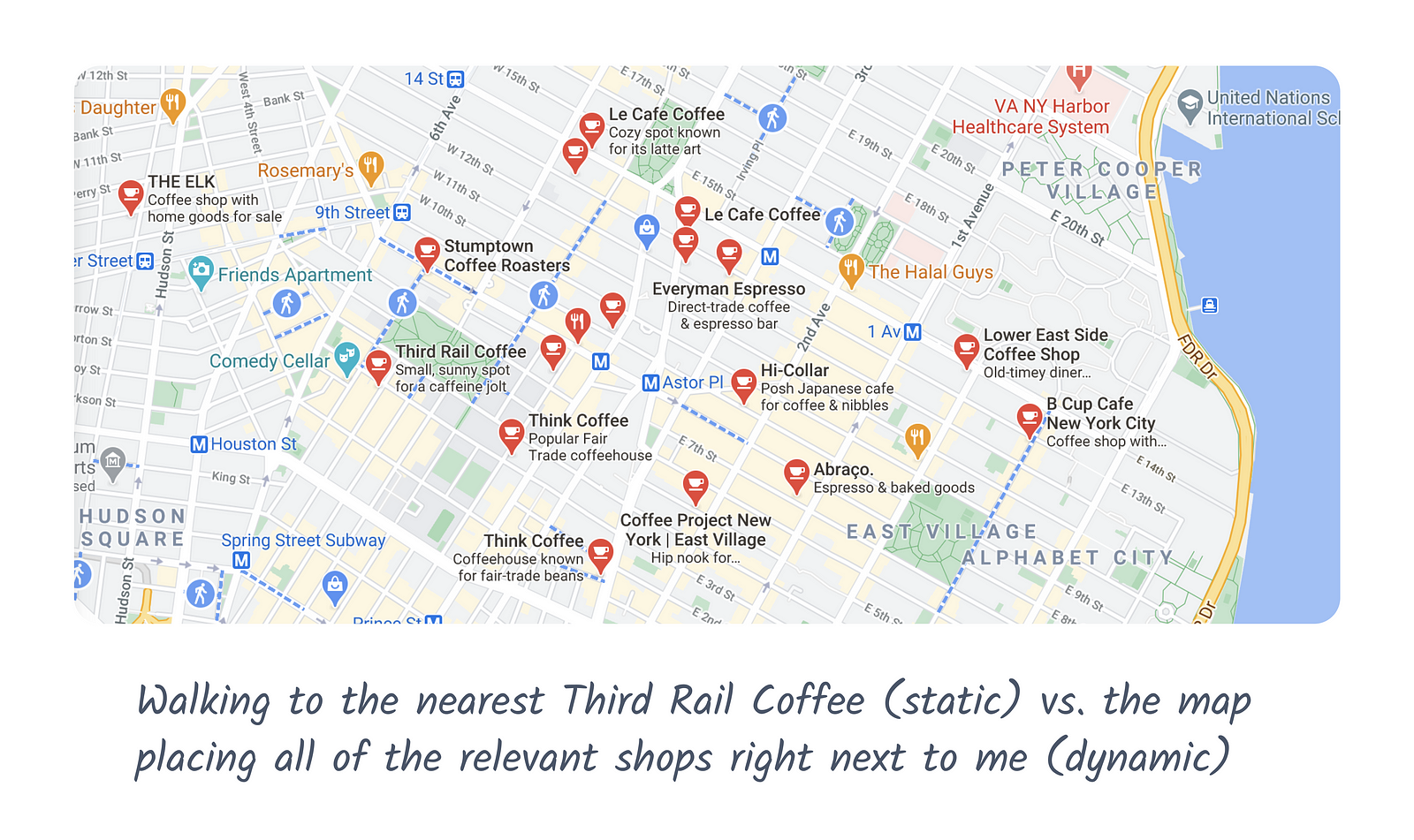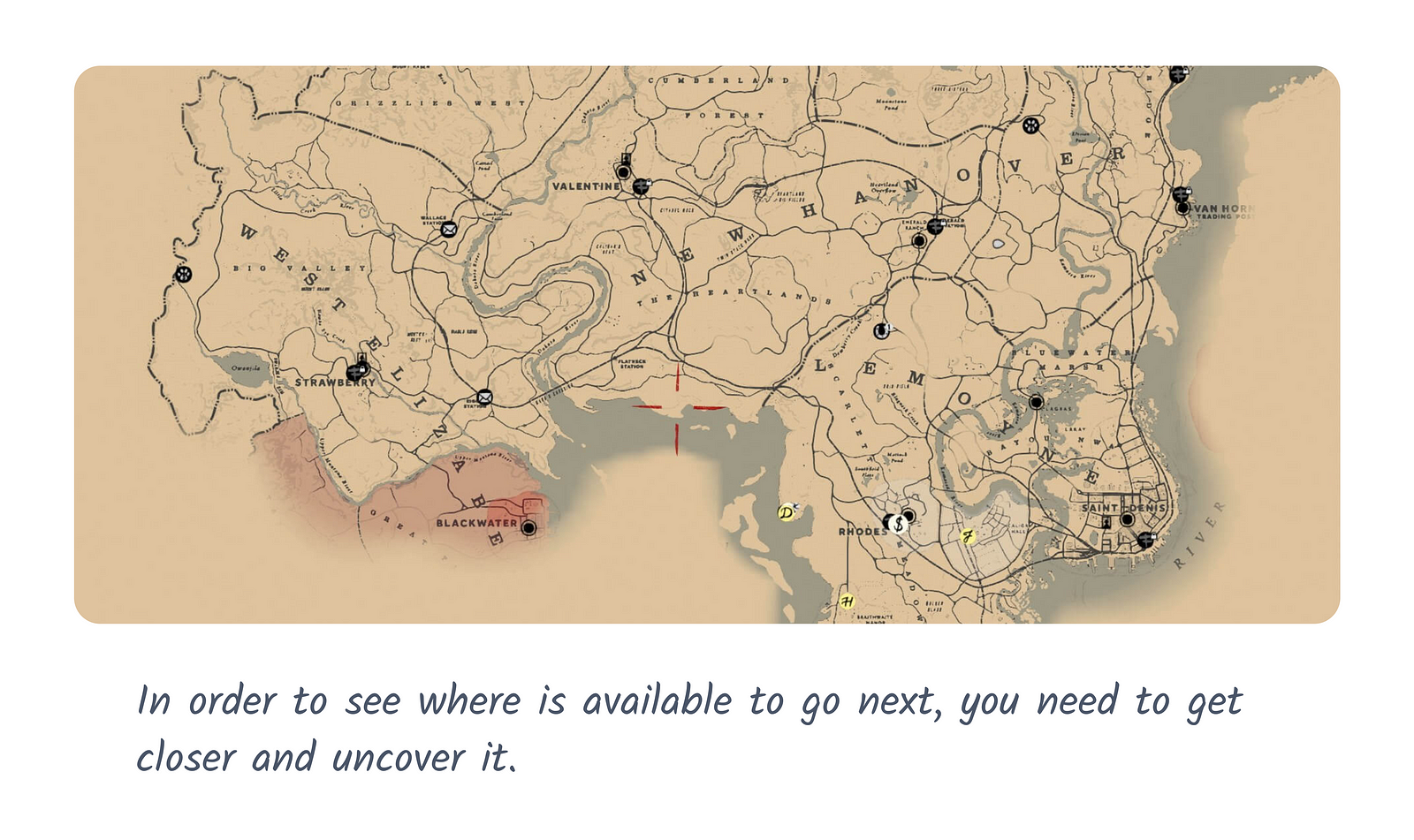🌀 At the Center of the Internet
Nov 22, 2020 • 4 min • Tech
Sometimes when I'm on the internet, jumping from hyperlink to hyperlink, I try to imagine what's happening from a bird's eye view. I imagine myself as a 2-dimensional point moving from node to node on an infinite graph.
From a technical standpoint, this seems like a decent depiction of what's happening, but I've realized that I often forget the graph isn't static. It's personalized to meet my needs in that exact moment.
Navigating the web
I first came across this idea when reading Louíse Drulhe's Critical Atlas of the Internet, which I highly recommend checking out. This quote got my attention:
The difference between earthspace and cyberspace: On Earth, people move towards their centers of interest; on the internet, we are at the center and space is created around us.
When I want a cup of coffee, I take a look at Google Maps and see what's nearby, then I walk there and place my order. On the internet, it often feels like I'm virtually walking to my destination all the same, but in reality, the map is regenerated to place 10 coffee shops right next to me.

When I first started writing this, my thinking was that search would teleport me to the part of the map that best serves my use case. However, this isn't quite right. In reality, the map is transformed depending on my needs, as shown by the coffee example.
On a global level, this means that the architecture of the internet is almost entirely controlled by search engines.
It's worth noting that on a local level, hyperlinks provide another way to navigate the web. Similar to a video game (e.g. Red Dead Redemption) where you uncover more of the map the more you explore, with every new url comes a new suite of hyperlinks that are available for you to click on.

Looking forward
There are a few implications of this phenomenon. The big one that comes to mind is filter bubbles. If the internet space is "created around us" then we are more inclined to pursue our areas of interest since they are closer in virtual proximity. In short, we stay within our tribes. This is especially the case on social media, where personalized algorithms function effectively the same way that I've described for search.
Perhaps more interesting to me is how we can use this realization to create better software. I like John Palmer's idea in Spatial Interfaces as a starting point:
Another idea for spatial thinking on the Internet is creating a spatial map. We talk about "Crypto Twitter" or "VC Twitter" as concepts. But don't they feel a bit like places? What if we had a map of the Internet? You could build a Chrome extension that acts as a little hovering map down in the bottom-right corner of any window. Like in an RPG, it could show your current location on the map and what's nearby, with the ability to teleport to any location, or just walk around. The owners of domain names could choose where on the map their domain is placed.
While not directly related, my mind goes to the browser. If links are a series of roads, then the browser is the vehicle that takes us where we need to go. When you put it like that, it's kind of weird that our vehicle hasn't changed much in the last 20 years.
Thanks for reading! If you enjoyed this post and you’re feeling generous, perhaps follow me on Twitter. You can also subscribe in the form below to get future posts like this one straight to your inbox. 🔥